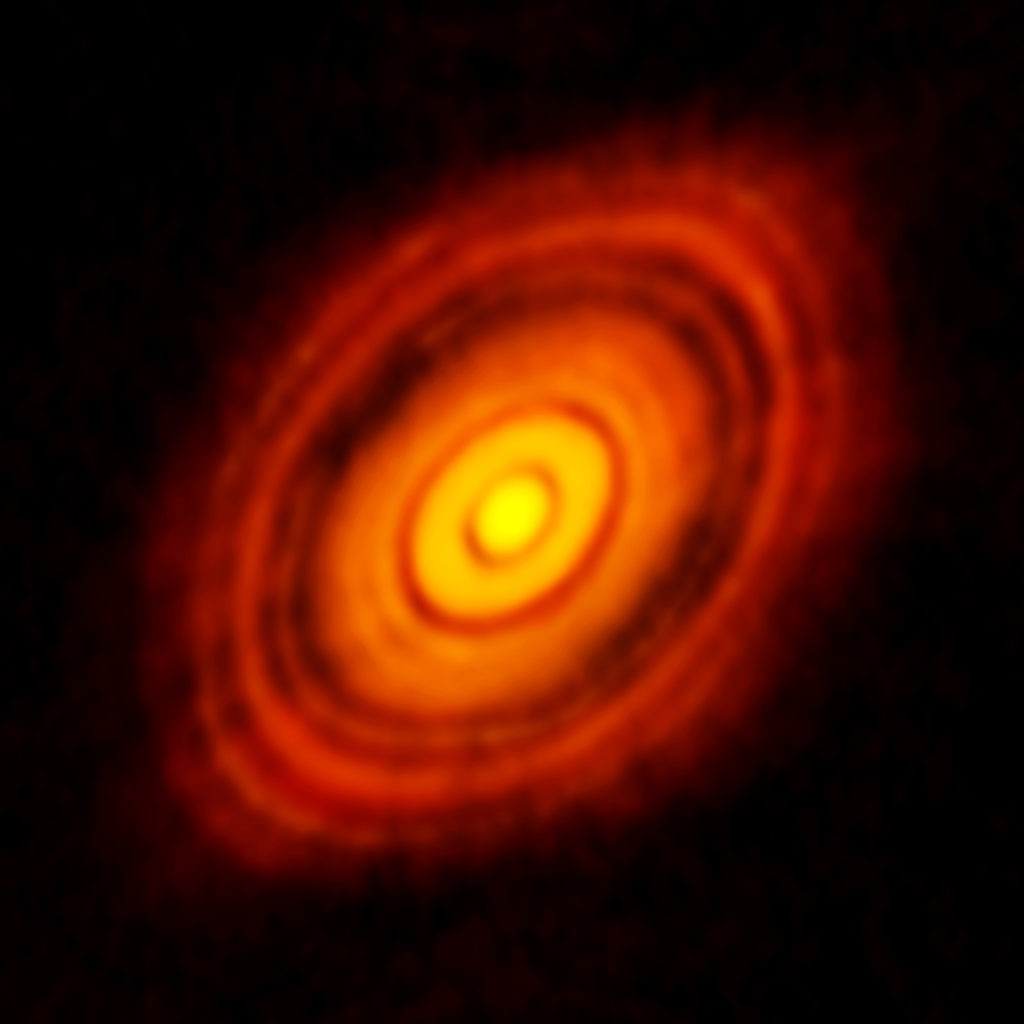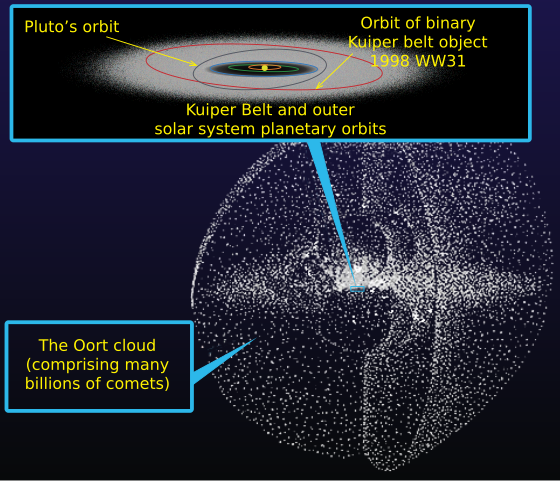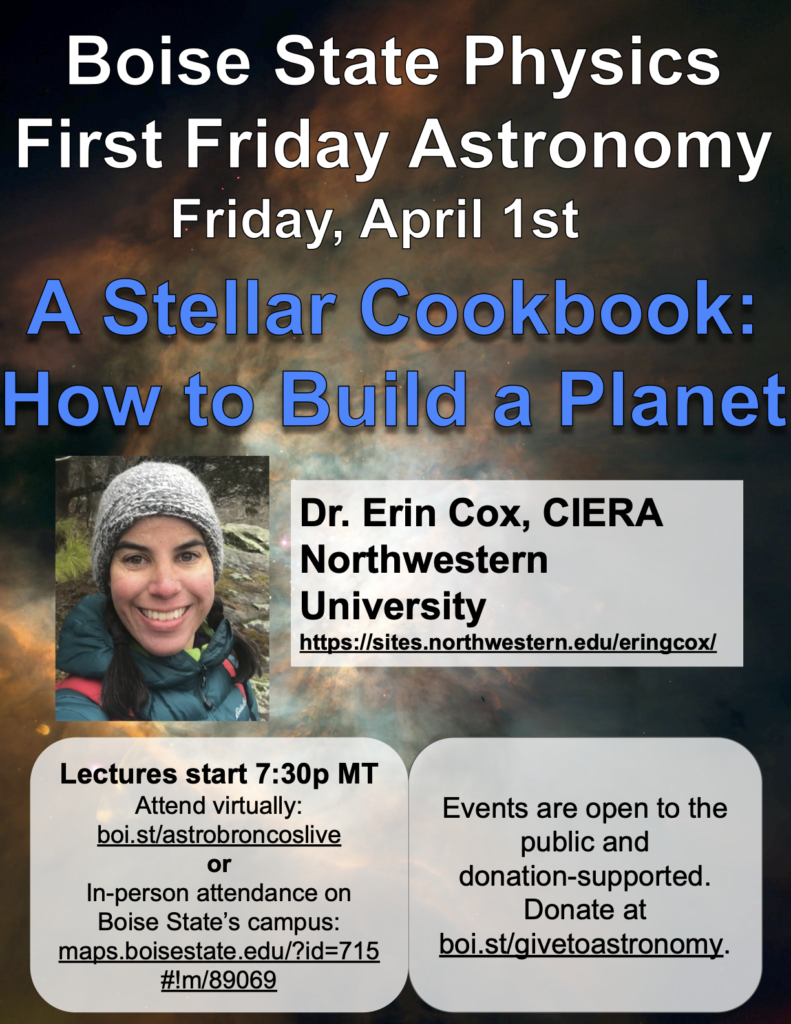
You may not know it, but every time you sweep your floor, you’re conducting an experiment in planet formation. The growth of dust bunnies under your broom resembles in some ways the processes of agglomeration that took place in the early Solar System and eventually produced the planets. By studying ongoing planet formation in other solar systems, we can probe the murky origins of our own Solar System. Insights from a Enlightenment-era German philosopher and World War II mathematicians, bolstered by newly bloomed mechanical desert flora, are uncovering the chaos that pervaded our Solar System’s beginnings.
The Story of Dust
Our present understanding of planetary formation has deep roots extending back to the fertile soil of the Enlightenment. Reflecting on the near alignment of Solar System orbits, the Enlightenment German philosopher Immanuel Kant proposed the “Nebular Hypothesis” in which the Solar System formed in a disk orbiting the Sun sometime in the distant past.
After Kant went on to other things, the French geometer Pierre-Simon Laplace wove the mathematical lacework describing many-body gravitational interactions that threaded the early Solar System. (Perhaps more impressive, Laplace threaded the needle of Napoleonic politics to become one of few elites to survive the French Revolution.)

After Laplace, though, the nebular hypothesis mostly languished as a backwater until the end of World War II when a group of Russian mathematicians picked up the threads. Drawing on mounting geophysical and geochemical data, Kiyv-trained mathematician Otto Schmidt proposed that Solar System planets formed from solid particulates orbiting within Kant’s disk. Moscow-based astronomer Viktor Safronov took up Schmidt’s proposal and set the theory on a solid mathematical footing, exploring the disk’s complex hydrodynamic and gravitational environment with robust physical scaling laws.
Though the computational resources to fully explore Safronov’s initial pen-and-paper calculations are only just now becoming available, Safronov’s ideas about dust grain dynamics in the early Solar System still undergird all modern simulations of planet formation. But for understanding the conditions in the early Solar System, perhaps more important than super-computers has been the cultivation of super-telescopes, and one such facility has recently blossomed like a field of robotic flowers in the high Chilean desert.
A Soft Rain

With faces upturned to catch the soft rain of radio waves from space, the 50 dishes of the Atacama Large Millimeter/submilliter Array (ALMA) sprawl across the bone-dry Atacama Desert. Although they look more like they are designed for satellite TV, the antennae are actually the world’s most expensive telescope.
The telescopes most of us use involve mirrors and lenses, which are great if you want to catch visible colors of light (with wavelengths between 200 and 700 nanometers). But some things in space shine in much redder (longer) wavelengths than our eyes can see.
Dust, for example — the same kind that Safronov suggested made the planets — often shines in the far infrared, at millimeter wavelengths. That is, radio wavelengths. So if you want to study planet formation in other solar systems, you need a telescope designed not with lenses but with radio dishes. Hence, ALMA’s unique design.
Another unique aspect of ALMA’s design: the antennae can be separated by as much as 16 kilometers (10 miles). Since ALMA observes in such long wavelengths, it requires a very long baseline to achieve a very fine focus (this wavelength-to-baseline relationship is actually a consequence of the Heisenberg uncertainty principle). Indeed, ALMA can resolve details as fine as 6 millionths of a degree (equivalent to seeing a dime at the top of Idaho’s Capitol Dome from Caldwell).

Since it began science operations in March 2013, ALMA has collected observations undreamt-of by Kant or Laplace. In a study led by Northwestern University’s Dr. Erin Cox, for example, ALMA imaged disks orbiting stars younger than 2 million years, young enough that planets are probably forming within the disks.
To try to understand how a disk’s environment shapes its behavior and formation of planets, Dr. Cox and colleagues imaged disks around many different kinds of stars, including binary stars. Theoretical expectations based on Safronov’s and others’ work suggests that companion stars can stir up the dust and any nascent planets in a disk, perhaps inhibiting their formation.
Indeed, Dr. Cox found that the disks in binary systems did look different from disks around single stars — they were smaller. But the binary-star disks were smaller than expected if gravity from the companion star simply destabilized the outer disks. Instead, some other mysterious mechanism seems to be at play, cutting the disks off. Mounting ALMA observations will help tell the tale.
It Takes a Cluster

So what does all this tell us about our own Solar System? Well, most of the dust cleared out of our Solar System a long time ago, but there’s still a fair amount of dust. Some of it rains down onto Earth as meteors, about 40,000 tons each year.
Instead of lots of dust, the edge of our Solar System is occupied by lots of small icy and rocky bodies, like Pluto, Sedna, and Quaoar, languorously circling the Sun over hundreds or thousands of years. These bodies form the Kuiper Belt and, even farther out, the Oort Cloud.
So far from the Sun and the other planets, the orbits in the Kuiper Belt have not changed much since the Solar System formed 4.5 billion years ago. That means their orbits reflect the environment in which the Sun and planets formed, like the orbits of dust grains in the baby solar systems observed by ALMA.

And what story do their orbits tell? The relatively sharp edge of the present-day Kuiper Belt, along with observations of young stars, suggest the Sun and its attendants were probably born in a cluster of more than one thousand other stars.
These stars buzzed frenetically around one another until the cluster broke up about 100 million years after the Sun’s formation. Like a game of flag football, gravitational tugs from its sibling stars plucked the most distant Kuiper Belt objects from the Sun, truncating it at a few hundred astronomical units (AU). All this gravitational tag helped make the the early Solar System a chaotic place but also helped deliver water to the inner Solar System, famously the key ingredient in life.
Are other rocky planets lucky enough to suffer the same life-giving bombardment as Earth? That’s a question the Atacama’s strange mechanical blossoms (and Safronov-inspired simulations) will help us answer.
Want to learn more about what ALMA is revealing about planet formation? Join Boise State Physics First Friday Astronomy on Friday, April 1 to hear Northwestern University’s Dr. Erin Cox describe her work on baby solar systems.
